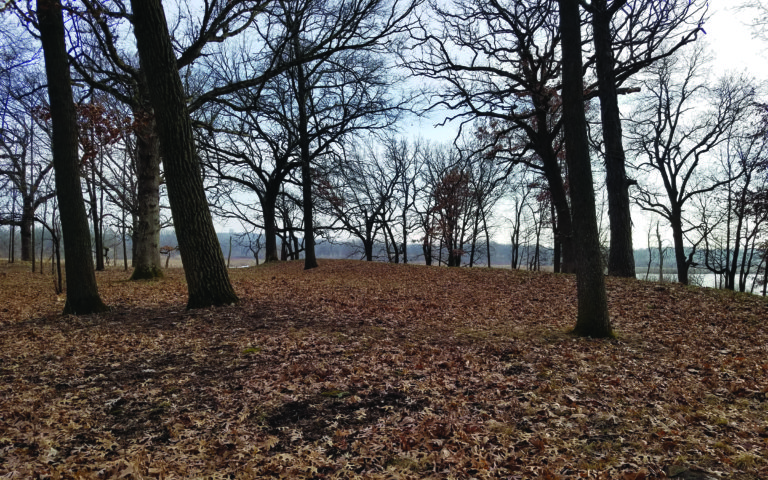
By Jan Axelson
Friends of Cherokee Marsh
The Northside is privileged to be home to multiple sites that contain earthen mounds constructed a thousand or more years ago. Many of the mounds are effigies in the shapes of animals, while others have conical, oval or linear shapes. Most of the Northside’s mounds are on land that is open for public viewing.
Using radiocarbon dating, researchers have placed construction of the mounds at around 700‒1100 A.D. The Ho-Chunk people were living in this area when European settlers arrived, and it is believed that present day Ho-Chunk are among the descendants of the mound builders.
The mounds are often located in groups and near large bodies of water or springs. Many mounds contain human remains, and the sites likely served as sacred ceremonial centers. In the past, many mounds were destroyed by farming and other development, but state law now forbids disturbance or destruction of burial sites, including mounds.
The Northside’s most spectacular collection of mounds is at Mendota Mental Health Institute. The Institute welcomes visitors, but you must register at the administration building before heading out to view the mounds. Staff will provide you with a map to guide your visit.
Among the mounds at Mendota are an eagle or thunderbird effigy with a massive 624-foot wingspan, as well as bears, water spirits, a four-legged deer and conical and linear mounds. A slope along Cinder Lane has a curve-tailed water spirit.
At Meadow Ridge Conservation Park, a bear mound is now more easily visible thanks to brush removal by volunteers from the Friends of Cherokee Marsh.
Cherokee Marsh Conservation Park’s North Unit has two conical mounds, one near the river and one on the hilltop.
Yahara Heights Park has a 208-foot water spirit or panther mound and a bear mound remaining from a larger group lost to farming. Many know Yahara Heights as the dog park on Hwy. 113, but the mounds are in the portion of the park that extends to the east along the north shore of the upper Yahara River. The water spirit overlooks the river, and the bear mound is nearby, further inland. The mounds are unmarked but easily viewable, again thanks to brush clearing by volunteers.
In the Maple Bluff area, few remain of over 50 documented mounds, but Burrows Park has a bird effigy restored many years ago after damage by looters.
If you visit the mounds, remember to respect them as burial sites and valued pieces of history. At Cherokee Marsh and Meadow Ridge Conservation Parks, please stay on the trails.
To learn more about mounds, two excellent books are available from bookstores and the Lakeview Library. “Spirits of Earth” by Robert A. Birmingham, former Wisconsin State Archaeologist, focuses on the mounds of Madison and the Four Lakes region. “Indian Mounds of Wisconsin,” in a new second edition by Birmingham and Wisconsin archaeologist Amy L. Rosebrough, includes information from recent research and imaging.
Where to see mounds on the Northside:
Mendota Mental Health Institute, 301 Troy Dr. You must register at the administration building (first building on your right as you enter the grounds),
7 am–4:30 pm, 301-1000.
Yahara Heights Park, Catfish Court. Take Northport Drive (Hwy. 113) north. At the stoplights about 1/3 mile past Hwy. M, turn right onto River Road and take an immediate right onto Catfish Court. From the small, off-road parking area and trailhead sign, walk past the dog exercise area and continue following the trails along the shoreline for about a mile to the mounds.
Meadow Ridge Conservation Park, 4002 Meadow Valley Dr. Take Troy Drive north, continue on Green Avenue, and turn onto Meadow Ridge Lane. Where the road ends, turn right onto Meadow Valley Drive and the park will be on your left. Take the trail that climbs the hill through the woods. The mound is at the top of the hill.
Cherokee Marsh Conservation Park, North Unit, 6098 N. Sherman Ave. Take North Sherman Avenue to the parking area at the end of the gravel road. See the trail map in the park for mound locations.
Burrows Park, 25 Burrows Rd. Take North Sherman Avenue south, take a slight right onto Sherman Avenue and an immediate right onto Burrows Road.